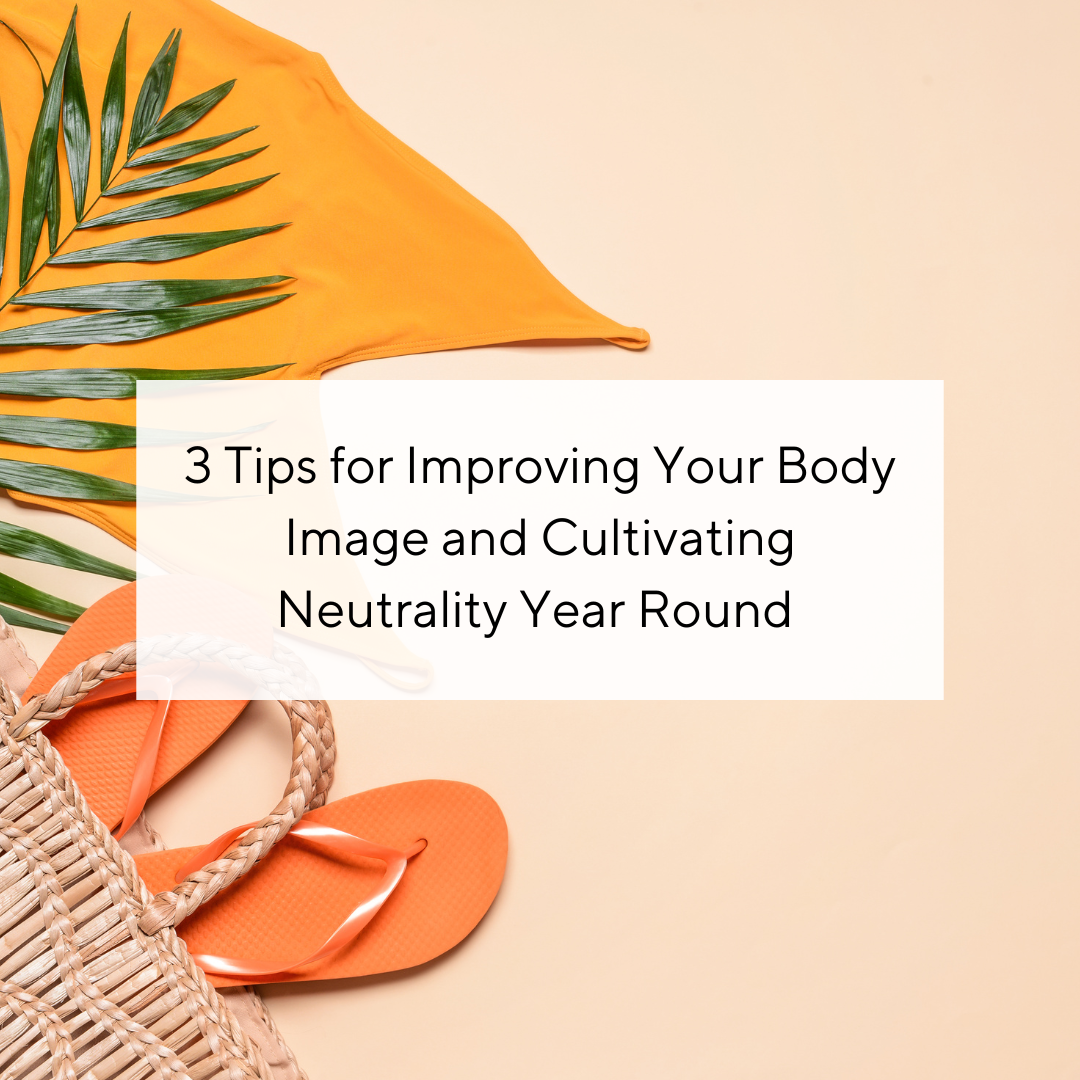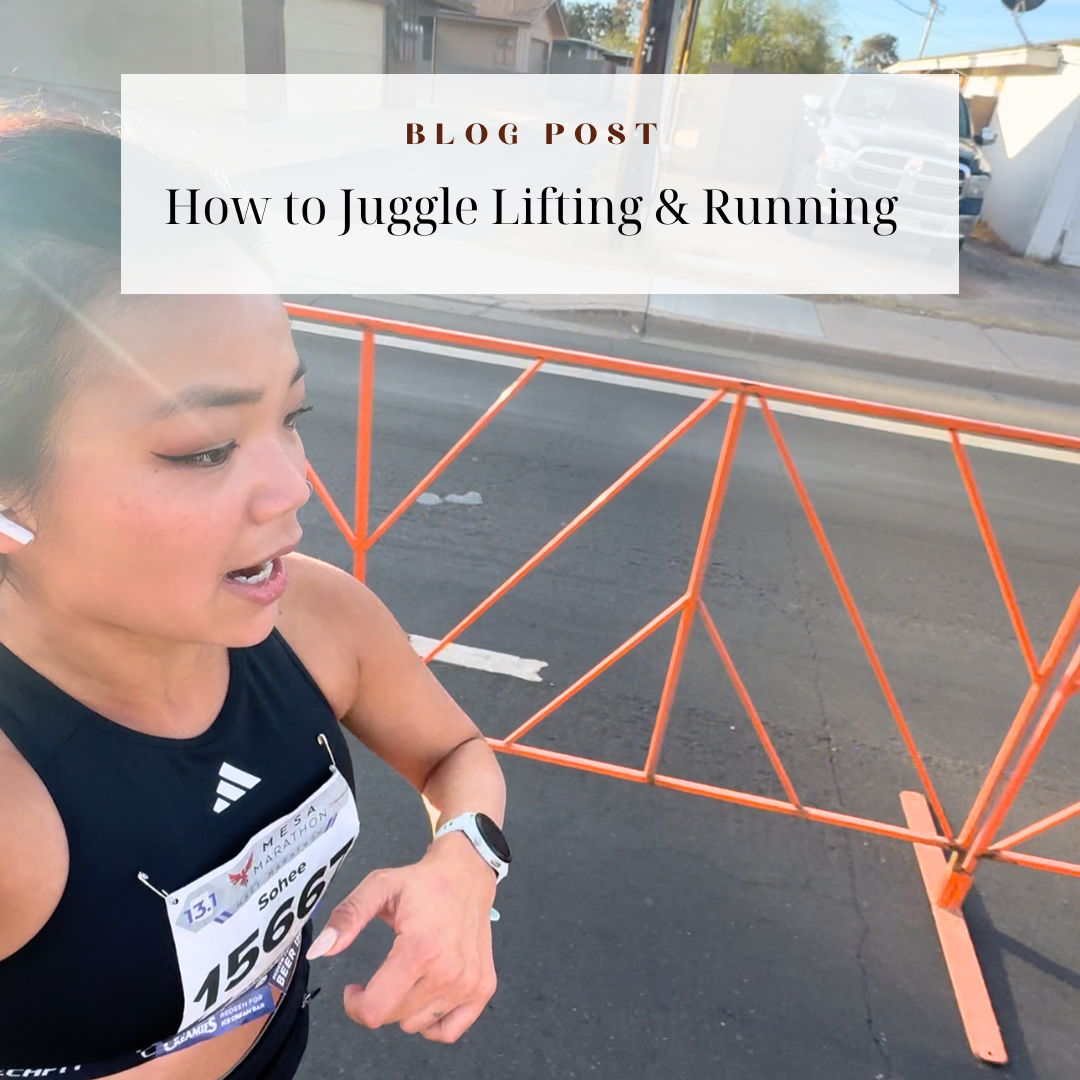3 Tips for Improving Your Body Image and Cultivating Body Neutrality Year Round

In just a few weeks, I’ll be walking down the aisle towards the man I fall more deeply in love with every day. Ben and I are already legally married, but we’re hosting an intimate celebration for our closest friends and family at a beautiful, secluded venue in the hills of southern California.
Here’s the cool thing. Amidst all of this, not once have I worried about fitting into my wedding dress or losing weight before the big day. I’ve been hitting PRs in the gym, enjoying amazing food, and a couple weeks ago, I wore a gorgeous one piece swimsuit at my bachelorette party without giving it a second thought.
Of course, I’m well aware that things would be drastically different if this were all happening when I was in my late teens to early 20s.
Back then, every event, holiday, and vacation felt like a deadline to get as lean as possible. I would draft up insane workout plans and restrict my food down to nothing. And for what? I was never happy, even when the number I’d been aiming for flashed back at me on the scale. I can only imagine how stressed and anxious I would have been with a wedding on the horizon.
I see this happening all the time with coaching clients. People enroll because they have something special coming up (e.g., a wedding, a cruise, a college or high school reunion) and suddenly feel compelled to diet down, usually within an unrealistic time frame.
The same thing is true during the summer. In fact, some early research into this phenomenon (termed “seasonal body image” by Griffiths et al.) found that many people feel pressure to conform to certain appearance ideals when the weather heats up, especially from social media.
It makes sense. During the summer, influencers waste no time stripping down to as little clothing as they can get away with, and most of the content you see on Instagram is designed to prey on your body anxieties: summer shredding challenges, ads for fat burners, and the empty promise that if your body aligned with societal and cultural norms, life would be better.
What I’ve learned over the years, from personal experience and as a professional coach, is that body image doesn’t exist on a spectrum. On any given day, how you think, feel, and behave towards your body can be positive, negative, a bit of both, or somewhere in between.
What I’ve also learned is that negative body image isn’t really about the wedding or the reunion or the summer vacation. In the majority of cases, it’s about yielding to a toxic inner narrative about who you’re supposed to be, rather than being content with who you are.
Body image is nuanced and sensitive, which can make it really overwhelming. But there’s no reason you can’t cultivate a healthy appreciation for yourself and reach a point of body neutrality that holds strong year round.
Here are three of my favorite strategies for calming body image fluctuations, learning to accept your body as it is, and flipping the script on society’s beauty standards.
- Curate your social media feed
This is one of the first things I recommend when someone is struggling with body image. And I do get pushback. Sometimes, people insist that they follow a certain influencer, bodybuilder, or fitness personality for motivation, without realizing how this person is affecting their mood and self-perception.
Scrolling through perfect images and videos that seem to defy reality can trigger comparison and cause us to become disconnected from our bodies, wondering why we don’t measure up. It’s so important to build up a protective filter against content that has the potential to harm your body image and learn to think critically about what you’re seeing before hitting follow.
When you have some downtime, go through your social media feed and ask yourself the following questions about each post that pops up:
→ What was the user’s motivation behind posting this?
→ What is the cost to me of pursuing the ideal depicted in this post or by this person?
→ Has this post been edited, photoshopped, or altered in any way?
→ Does this post acknowledge a diverse concept of beauty?
Scrolling social media should never come at the expense of your body image progress, self-worth, or values.
- Start reflecting on body functionality
When you equate your worth with your physical appearance, it’s nearly impossible to bring your body image to a neutral place. Learning to decouple the two by reflecting on body functionality can change that.
Body functionality is everything your body is capable of. This includes physical capabilities, internal processes, bodily sensations, creative endeavors, personality traits, and communication with others.
The goal here is to find value in the things your body is capable of that have nothing to do with the way you look. When I take time to contemplate this, I imagine what life would be like if I wasn’t able to dance at my wedding, bake gluten-free, dairy-free chocolate cake for my husband, or come up with creative ways to communicate my personal philosophy about health and fitness.
It turns out I have a lot going for me – and I bet you do, too.
- Graded exposure to body image fears
Graded exposure is a psychological technique used to help people overcome avoidance of situations or activities due to fear or anxiety. It involves habituation, or gradual exposure, to a trigger until the negative feelings and associations start to fall away.
We often use graded exposure with clients who are afraid that having certain foods in the house will lead to a binge. By incorporating these fear foods into meals and snacks on a consistent basis, the novelty of eating them wears off and these clients are eventually able to keep fear foods at home without expecting the worst.
The same thing goes for body image. If you have anxiety about looking in mirrors or wearing certain types of clothing, pinpoint one small step you can take to gradually expose yourself to what’s driving the fear. Maybe you start by buying a pair of shorts and wearing them around the house. A week or two later, you wear them to the grocery store. And soon after that, you wear them out to lunch with a close friend.
Voluntarily making yourself vulnerable is tough, but stalling will only make it more difficult. Start small, be patient, and with consistent practice, you’ll start to feel more comfortable showing up as you are. Moving towards a more neutral place with body image is an ongoing work in progress, so don’t be too hard on yourself if you feel like you’re backsliding on some days. But with these three practices, you can and not let yourself be sidelined by one “bad” moment.
References:
Binder, A., Noetzel, S., Spielvogel, I., & Matthes, J. (2021). Context, Please?” The Effects of Appearance- and Health-Frames and Media Context on Body-Related Outcomes. Front Public Health, 9. doi: 10.3389/fpubh.2021.637354
Griffiths, S., Austen, E., Krug, I., & Blake, K. (2021). Beach body ready? Shredding for summer? A first look at seasonal body image. Body Image, 37, 269-281. doi: 10.1016/j.bodyim.2021.03.004
Schneider, K. (2023, June 26). Body Image & Weight Stigma in Fitness Spaces [PowerPoint Slides].




